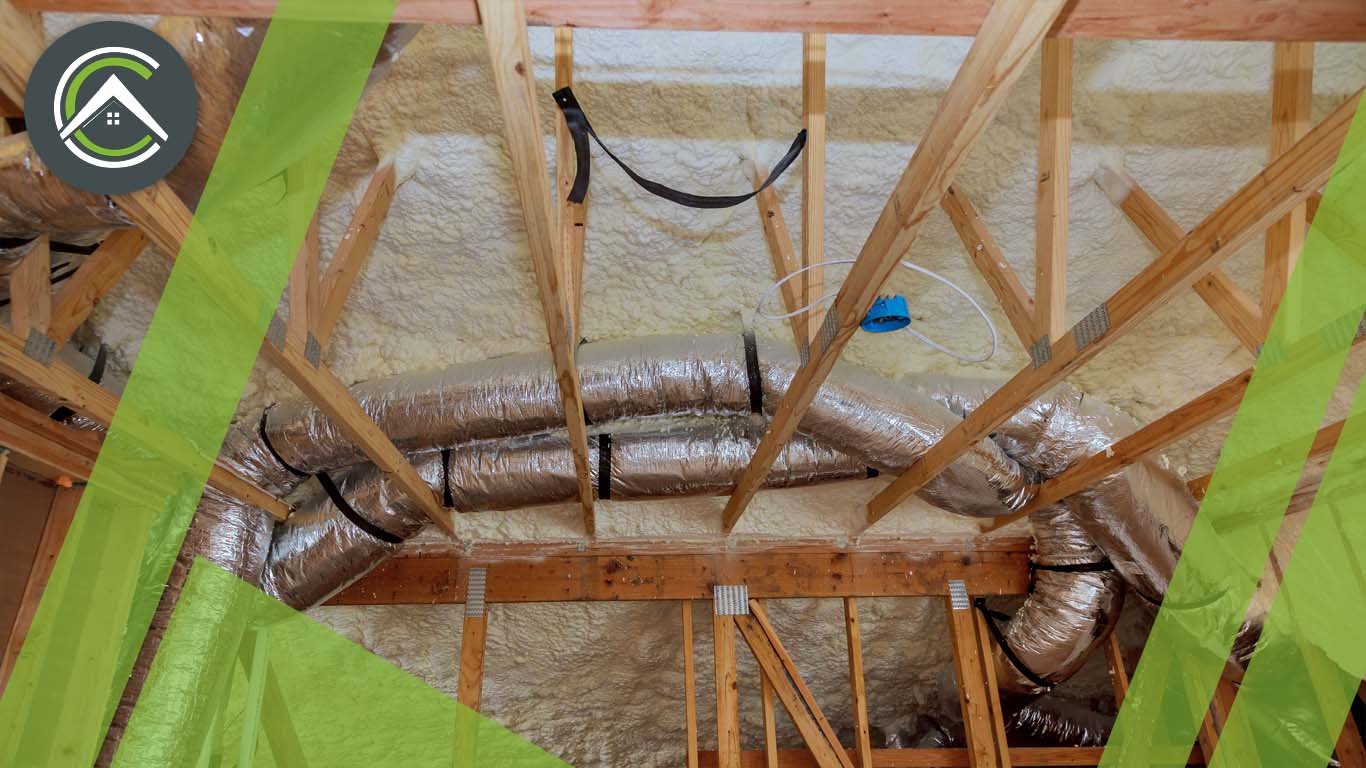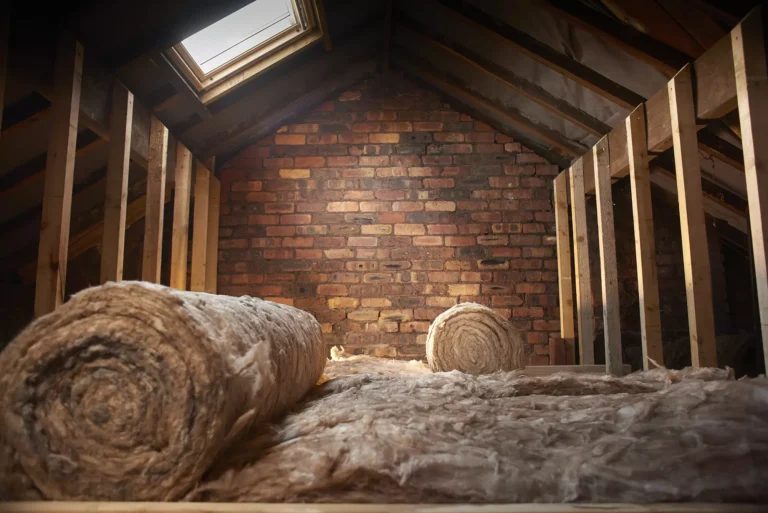Blog
Rockwool Insulation | Unlocking Ideal Energy Efficiency
Rockwool insulation is one of several home insulation solutions, along with fiberglass, spray foam, and insulated plasterboard. But what is Rockwool insulation? How is it created? What are its benefits? Continue reading.
What Is Rockwool Insulation?
Rock wool is also mineral or stone wool, and the phrases are frequently used interchangeably. This type of insulation takes its name from the materials used to make it rocks and stones.
Rockwool is a naturally occurring consequence of volcanic activity. Still, it may also be made by heating rocks to extremely high temperatures until they melt and form a lava-like consistency. This is then blown together with copper or steel slag (waste products) to make the insulation material, similar to how candy floss is spun.
This type of insulation is available in batt, board, roll, and pipe forms, and it is often offered in a single standard color with a foil backing. Rockwool insulation is an excellent choice for insulating cavity walls, common in most homes built after 1920.
Rockwool Insulation Price
Cost guides provide rough cost ranges for important tasks under typical conditions. Estimates should be utilized only for exploratory planning. Estimates are NOT a substitute for qualified vendor bids. Before making any decisions or commitments, we strongly advise consulting reliable professionals for an accurate estimate of the work necessary and prices for your project.
- Labor responsibilities include installing and securing batt insulation between open wall joists.
- Estimates for Rockwool Insulation may necessitate an on-site assessment. These estimates are usually “free.” Any evaluation should be accompanied by an in-depth sales pitch/presentation.
- The estimates include all usual labor, supply, and tool costs for unpacking, fitting, and securing insulation batts.
- The cost estimates for mineral wool Insulation do not include expenditures for removing old insulation or debris, modifying or repairing existing structures, or finishing surfaces.
- Variations in workload, employment location, and seasonal wage rates partly cause differences in low to high labor costs.
- Installation costs might vary significantly for complex layouts (non-rectangular shape, many corners, multiple stories, etc.). Collect thorough quotations from many reputable professionals to get precise pricing estimates.
- Higher-priced Rockwool insulation is often more durable, has more extended warranties, and has improved look and finish options.
- The cost of installing rock wool covering varies greatly depending on where you live. Enter your zip code for an exact estimate in your region.
- Reduce installation costs by combining related works and being ready to have your project finished when the vendor/installer is not in high demand.
- Reduce total project costs by having many vendors bid on your Rockwool covering the project’s precise technical work specifications.
Rockwool Insulation vs Fiberglass
If you’re unsure whether to go with Rockwool or fiberglass (commonly known as glass wool) insulation, here’s a direct comparison of the two:
- Rockwool is thicker than fiberglass, which improves its thermal properties and acoustic soundproofing.
- Stone wool insulation does not retain water, but if wet, it can cause damage and lead to insulation mold.
- Rockwool insulation is slightly more expensive than glass wool insulation.
- Mineral wool insulation is more durable than fiberglass insulation.
- Rockwool covering is often less irritating and dusty than fiberglass insulation.

Rockwool Insulation Installation
To install rock wool covering, you must first determine the type and form of the insulation and the application area. Here are some general principles for installing rockwool covering:
- First, measure the areas to be insulated and cut the insulation accordingly. You can use a tape measure, utility knife, serrated plasterboard knife, straightedge, or a 2 x 4 to cut the insulation. Use gloves, safety glasses, a long-sleeved shirt, long pants, and a respirator to avoid skin, eye, and respiratory irritation.
- Then, using caulk, tape, foam, or other sealants, fill any gaps and cracks in the walls, floors, ceilings, or other surfaces. This will help to reduce air leakage and increase the thermal performance of the insulation.
- The insulation must then be installed at the desired location. Numerous methods might be used depending on the insulation type and the application. Batts or rolls, for example, can be used for walls, floors, or ceilings; boards for roofs or exterior walls; loose fill for attics or hard-to-reach regions; or pipe sections for pipes or ducts. You should follow the manufacturer’s instructions and building codes for practical installation. You may need to use fasteners, staples, strapping, adhesives, or other accessories to hold the insulation in place.
- Finally, to prevent exposure and improve the appearance and performance of the insulation, cover it with plasterboard or other material. It would be best to clean up the work area with a hoover or a moist towel to remove any dust or fibers.
What Are The Advantages of Rockwool Insulation?
Rockwool insulation has many advantages as an insulating material, ranging from R-value to acoustic soundproofing capabilities. It’s a good, thick form of home insulation with the following primary advantages:
- Made from recycled materials – Stone wool insulation is often created from up to 70% recycled materials, making it a fantastic, sustainable solution for making your home more eco-friendly.
- High R-value- Rockwool insulation has a higher R-value than fiberglass insulation (3.0 to 3.3 per inch versus 2.2 to 2.7 per inch). This means that stone wool has stronger thermal resistance, making it a suitable alternative for heating your home and perhaps saving you money on energy expenses. Rockwool retains its R-value over time as well.
- Incredibly versatile -Mineral wool Insulation is incredibly adaptable, as it can insulate various portions of your home, including the walls, loft, floor, and ceiling. This form of insulation can be applied almost anywhere.
- Highly durable -Rockwool’s unique composition makes it far more durable than fiberglass insulation; if adequately put, it should last as long as the structure itself.
- Mould-resistant – Because rock wool covering is inorganic, there is nowhere for mold to grow. Its moisture resistance also aids in the prevention of insulation mold growth.
- Acoustic characteristics – Because rock wool is a relatively thick insulation material, it is ideal for soundproofing a space.
- Fire-resistant Insulation-Mineral wool insulation is a superb fire-resistant building material made from genuine rocks and stones. It can withstand heat up to 1,400°F (760°C).
- Easy to install -Stone wool insulation is less dusty and uncomfortable than fiberglass insulation, making installation easier. Rock wool is also remarkably easy to cut with the correct blade – usually a bread knife.
- Retains shape – This insulation can keep its shape for extended periods because it reduces air and heat flow.
Raise Your Space With Confirmedc
To sum up, Rockwool insulation is a great way to save energy, block out noise, and make your home safer in case of fire. It stands out among insulation materials because it can be installed in various ways and has excellent thermal qualities.
When looking at insulation options, make an educated decision that meets your needs and goes above and beyond them; choose Rockwool covering for a safer and more comfortable place to live or work.
more insights

Is There Asbestos in Your Loft? What to Know Before Insulation Removal
If your home was built before the 1990s, there’s a chance that your loft insulation could contain asbestos—a hidden danger

Best Heat Pumps for Cold Climates in Canada: Top Picks for 2025
Canadian winters are no joke, and heating your home efficiently is more important than ever. In 2025, cold climate heat

Top 5 Signs Your Basement Needs New Basement Insulation (and What to Do About It)
Your basement plays a huge role in your home’s comfort, energy efficiency, and even air quality—but only if it’s properly